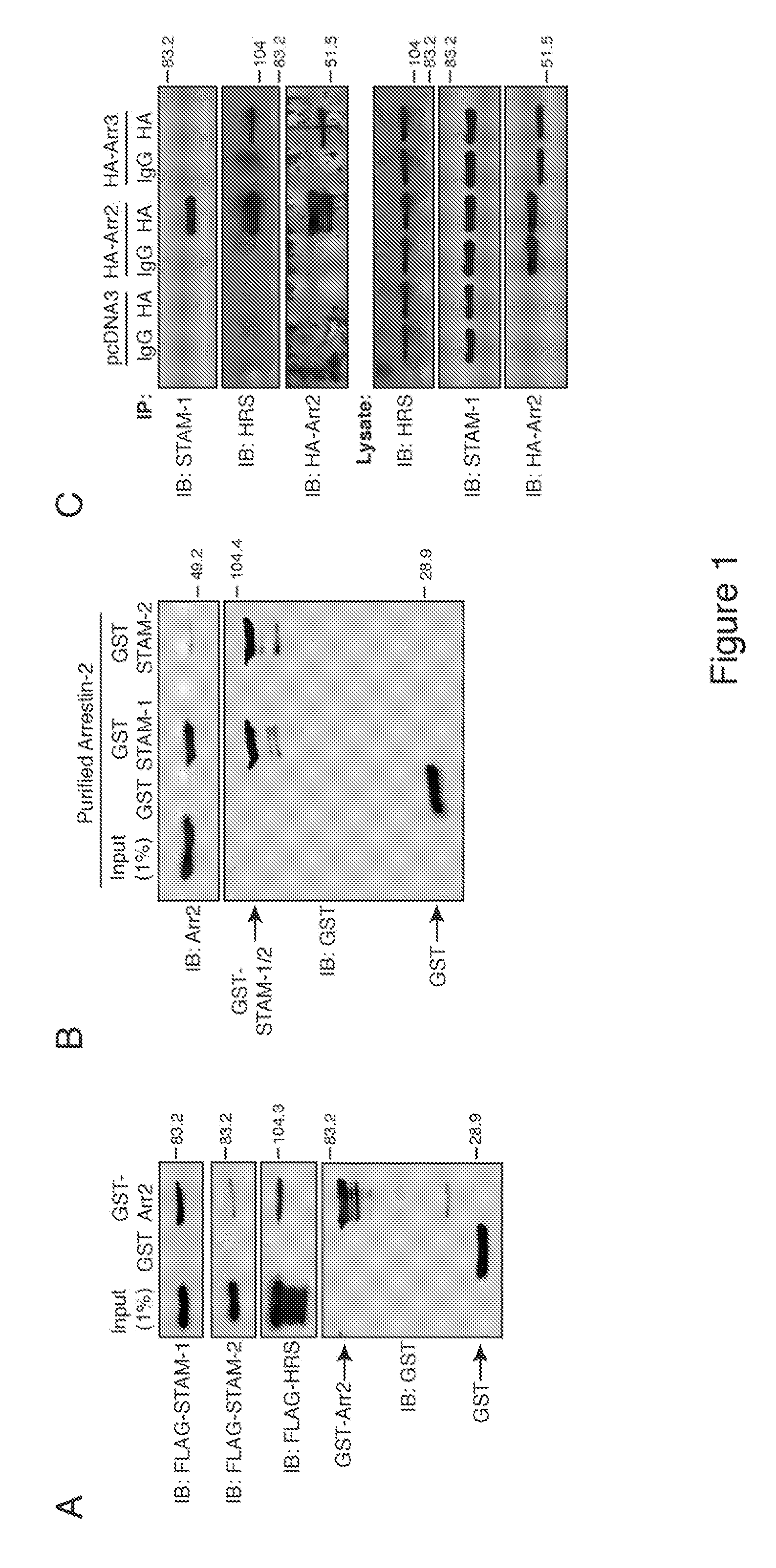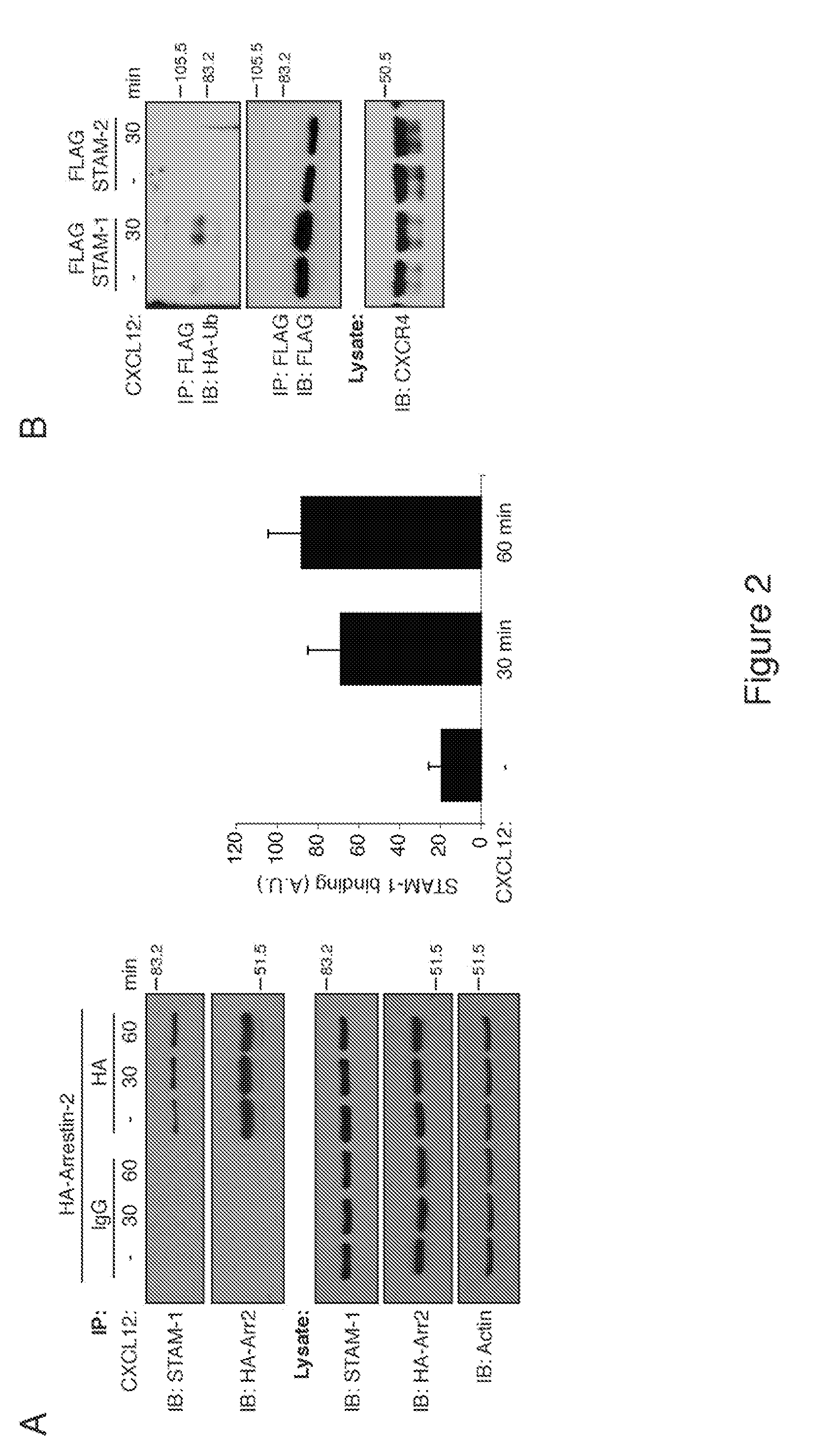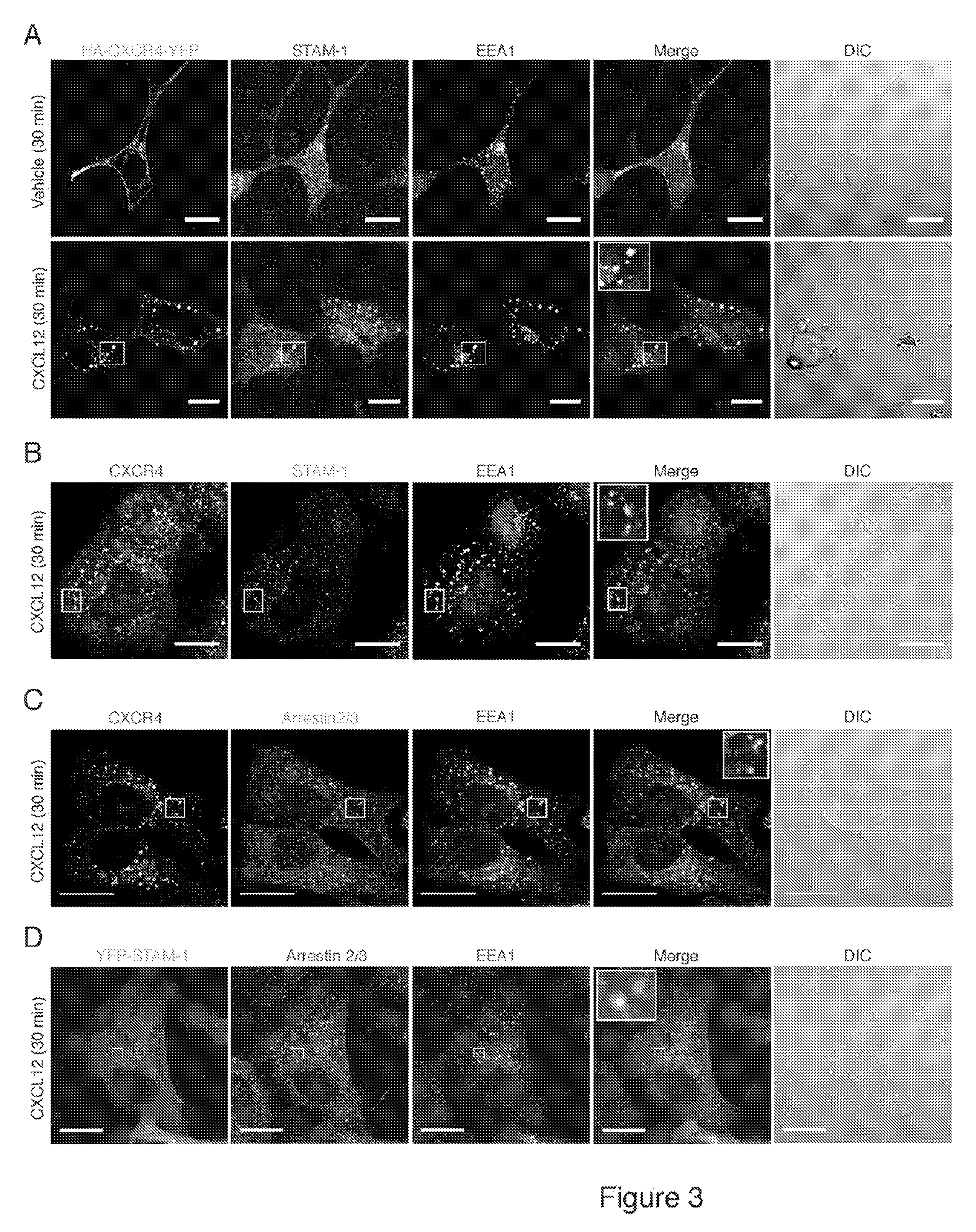Methods of utilizing the arrestin-2/STAM-1 complex as a therapeutic target
a technology of arrestin and complex, which is applied in the direction of cardiovascular disorders, drug compositions, instruments, etc., can solve the problems of unspecific direct targeting of cxcr4 and the potential of producing unintended consequences, and achieve the effects of accelerating cxcr4 degradation, lowering cxcr4 levels, and stabilizing cxcr4 levels
- Summary
- Abstract
- Description
- Claims
- Application Information
AI Technical Summary
Benefits of technology
Problems solved by technology
Method used
Image
Examples
Embodiment Construction
[0034]The chemokine receptor CXCR4, a G protein-coupled receptor, is targeted for lysosomal degradation via a ubiquitin-dependent mechanism that involves the endosomal sorting complex required for transport (ESCRT) machinery. The following reports an investigation which showed that arrestin-2 interacts with ESCRT-0, a protein complex that recognizes and sorts ubiquitinated cargo into the degradative pathway. In particular, STAM-1 (but, notably, not related STAM-2) interacts directly with arrestin-2 and co-localizes with CXCR4 on EEA1 positive early endosomes. Depletion of STAM-1 by RNAi and disruption of the arrestin-2 / STAM-1 interaction accelerates agonist-promoted degradation of CXCR4, suggesting that STAM-1 via its interaction with arrestin-2 negatively regulates CXCR4 endosomal (lysosomal) sorting via ubiquitination of HRS. The investigation provided mechanistic insight into the role that arrestin-2 has on targeting CXCR4 into the degradative pathway and furthered an understandi...
PUM
| Property | Measurement | Unit |
|---|---|---|
| pH | aaaaa | aaaaa |
| pH | aaaaa | aaaaa |
| pH | aaaaa | aaaaa |
Abstract
Description
Claims
Application Information
 Login to View More
Login to View More - R&D
- Intellectual Property
- Life Sciences
- Materials
- Tech Scout
- Unparalleled Data Quality
- Higher Quality Content
- 60% Fewer Hallucinations
Browse by: Latest US Patents, China's latest patents, Technical Efficacy Thesaurus, Application Domain, Technology Topic, Popular Technical Reports.
© 2025 PatSnap. All rights reserved.Legal|Privacy policy|Modern Slavery Act Transparency Statement|Sitemap|About US| Contact US: help@patsnap.com



